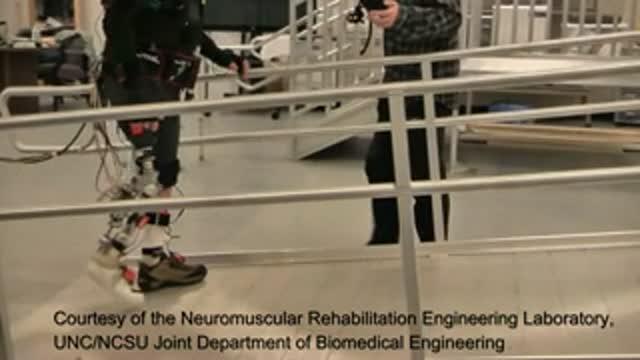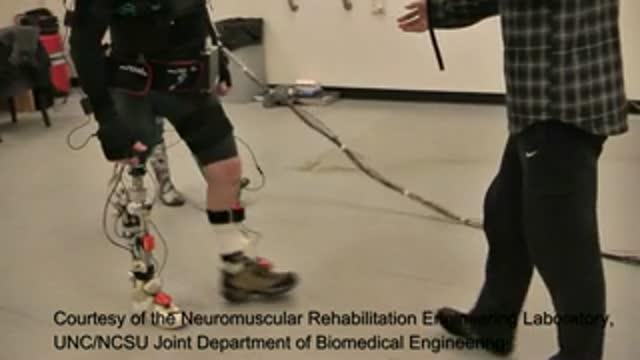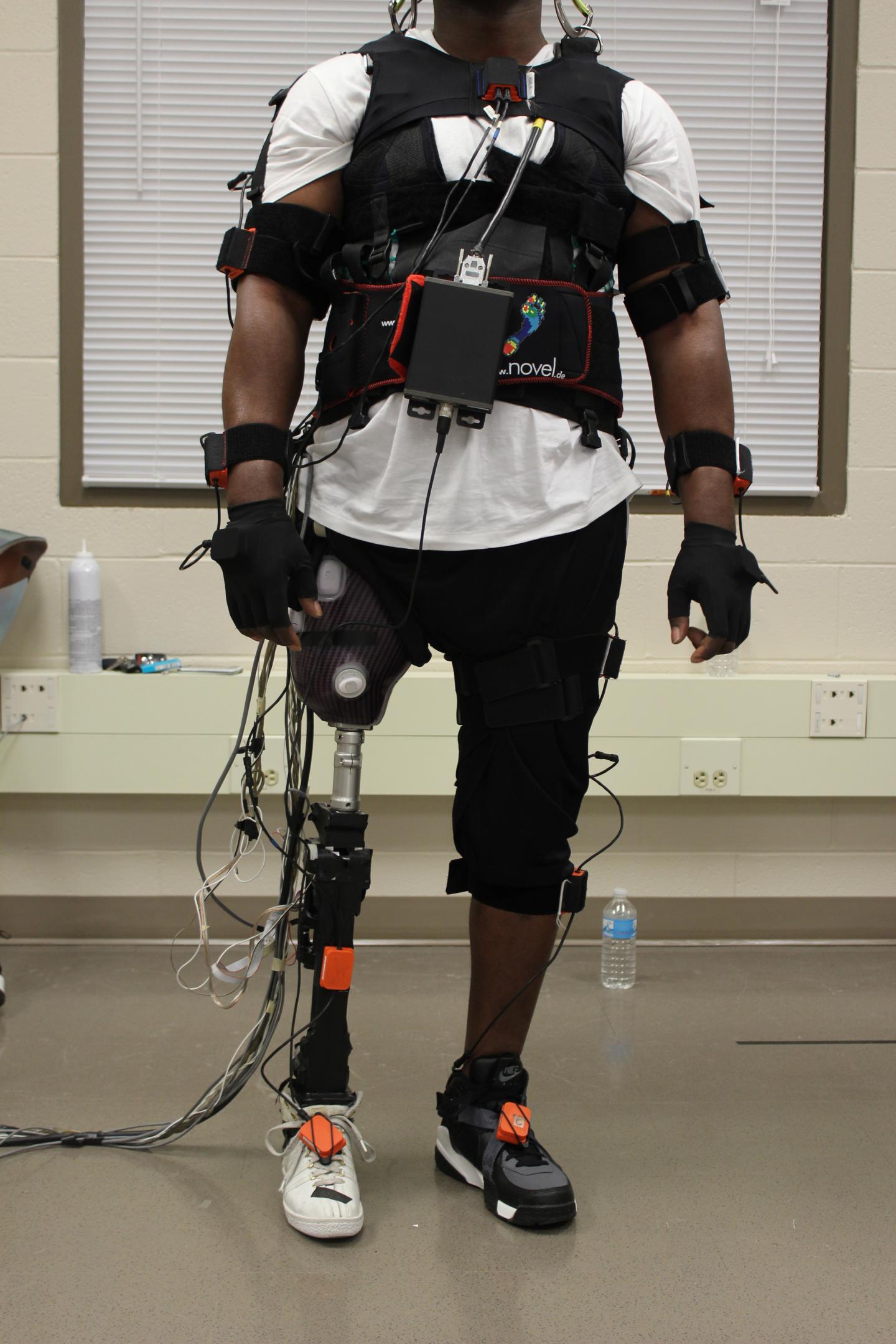"One of the things we'll be doing as we move forward with this work is seek ways to limit that mechanical work change," Huang says.
"Any system that involves a human interface will have occasional errors," Huang notes. "But we think we can find ways to make those errors effectively insignificant."

Powered lower limb prosthetics hold promise for improving the mobility of amputees, but errors in the technology may also cause some users to stumble or fall. New research from the lab of Helen Huang examines exactly what happens when these technologies fail, with the goal of developing a new generation of more robust powered prostheses. This video shows a "stable" error, where the user doesn't notice something went wrong. Huang is an associate professor in the joint biomedical engineering program at North Carolina State University and the University of North Carolina at Chapel Hill.
(Photo Credit: North Carolina State University)

Powered lower limb prosthetics hold promise for improving the mobility of amputees, but errors in the technology may also cause some users to stumble or fall. New research from the lab of Helen Huang examines exactly what happens when these technologies fail, with the goal of developing a new generation of more robust powered prostheses. This video shows an "unstable" error, where the user's stability was noticeably affected when something went wrong. Huang is an associate professor in the joint biomedical engineering program at North Carolina State University and the University of North Carolina at Chapel Hill.
(Photo Credit: North Carolina State University)

Dr. Helen Huang's work at North Carolina State University focuses on technology that translates electrical signals in human muscle into signals that control powered prosthetic limbs.
(Photo Credit: North Carolina State University)
Source: North Carolina State University